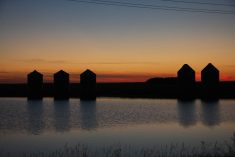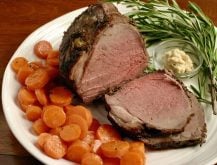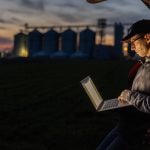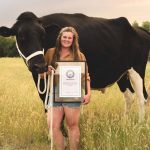DEL BONITA, Alta. — It was a purebred dispersal sale unique in a number of ways, not the least of which was the absence of live cattle in the ring. It might also be one of the largest purebred dispersals ever held in Alberta.
Featured cattle were penned behind the sale barn for viewing, but all could be seen by video display as the lots were sold.
Remington Land and Cattle, near the U.S. border, held a complete dispersal Oct. 17-19 of its approximately 1,600 purebred and half-cross cattle.
Read Also
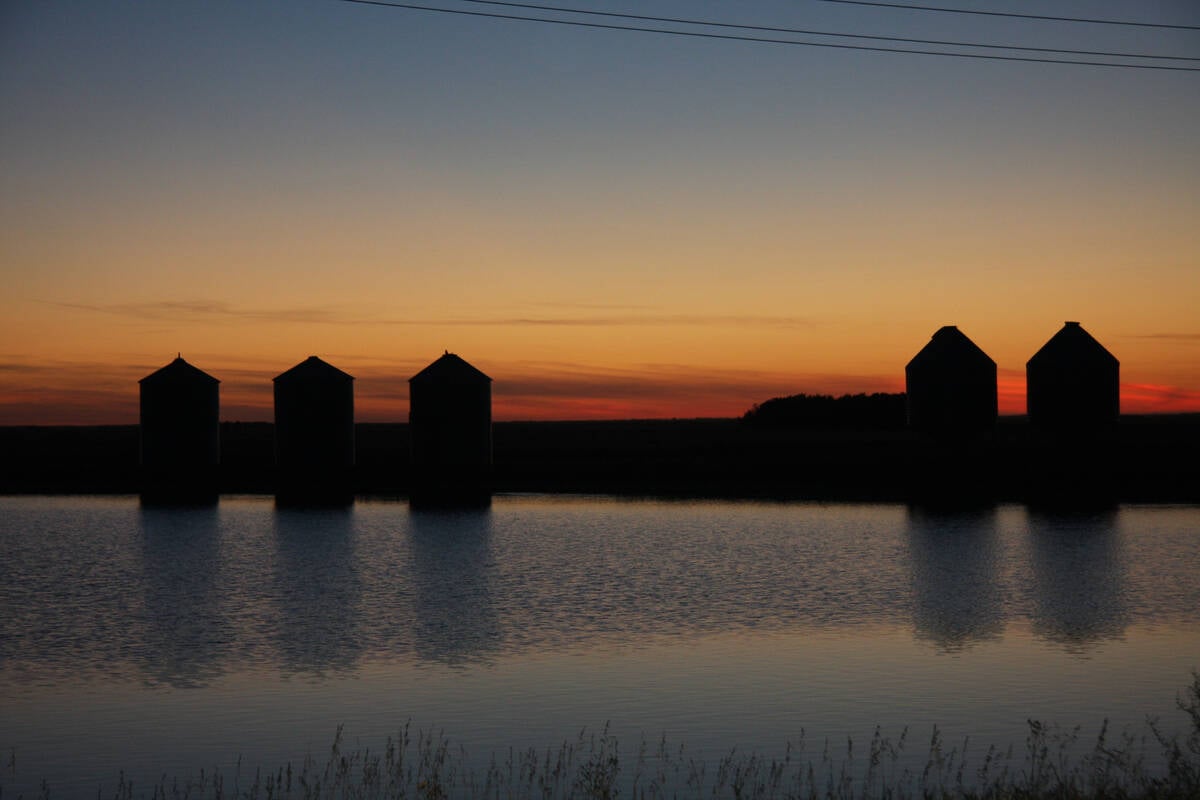
Know what costs are involved in keeping crops in the bin
When you’re looking at full bins and rising calf prices, the human reflex is to hold on and hope for more. That’s not a plan. It’s a bet. Storage has a price tag.
Dubbed The Final Drive sale, Angus and Simmental cattle were on offer, along with half-blood crosses of the two.
With that number of cattle to sell and only three days in which to do it at the ranch site, video provided the answer.
“It was one of the first video sales of that magnitude,” said Gary Rairdan, cattle operations manager for Remington.
Video of the animals was provided beforehand to prospective buyers online and on DVD. They could bid on sale days by phone, online or in person.
Tim Lockart, owner of the Texasbased video firm Cattle in Motion, said he and his employees spent 15 days in June and September shooting video of the sale animals and another 15 days editing.
“We typically get about a minute to two minutes worth of good video and then edit that down to somewhere between 20 and 40 seconds (per animal).”
It amounts to more than 50 hours of video, distilled into 25 hours worth of clips shown over the course of the three-day sale.
However, the technique speeds the process for large sales like this and limits the need to disrupt the cattle.
“It’s a growing deal,” Lockhart said about video technology for cattle sales.
“Especially on a sale that size, it just isn’t feasible to run them all through. We do a lot of this. People use it as pre-marketing. A lot of our clients use it for that, to try to drum up potential business.”
The ranch parking lot featured vehicles with licence plates from all over North America, which was reflected in the sales results.
“I haven’t figured out how many states we sold to. I think we sold at least one to every province in Canada,” said Rairdan.
Residents of Georgia, Wisconsin, Minnesota, Michigan, Iowa, Illinois, Indiana, Colorado, Texas, Oklahoma, Kansas and Nebraska were also among the buyers.
Some cattle also sold to Mexico and to Australia, although Rairdan said the latter animals will remain in Canada and be flushed for embryos to be shipped overseas.
Sale averages had not been calculated by Oct. 24, but Rairdan said the sale went well and prices were good. Typical of any auction, “some brought way more than we thought and others didn’t bring as much as we thought.”
The ranch is moving to commercial cattle herds on its two ranches near Del Bonita and near Morse, Sask., in central Saskatchewan.
Business manager Jodi Robertson said ranch owner Randy Remington was ready to retire from the purebred business and wanted to simplify operations.
The Remington family has been in the cattle business for nearly 50 years. In his welcome within the sale catalogue to potential buyers, ranch owner Remington referred to “the next chapter” for Remington in going the commercial cattle route.



